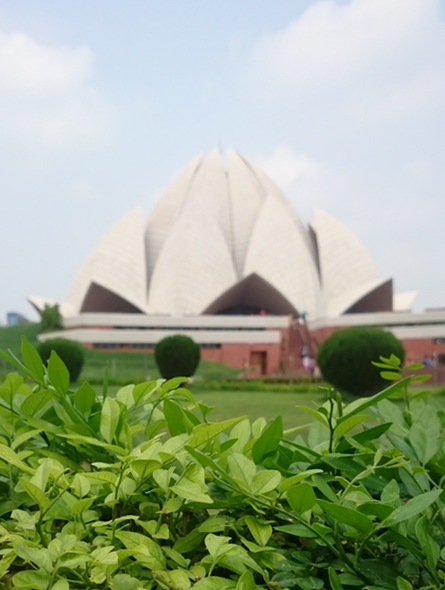Visiting the Taj Mahal
Share
The seventh wonder of the world. Built by one of the most powerful rulers of its time to show everyone how much he loved his wife. Well, one of them anyway.
Grand, imposing and perfectly symmetrical; the Taj Mahal is a spectacular mausoleum made from the finest marble. It truly is breathtaking. Not just the main building, but also the gardens, mosques, walls and other buildings surrounding it create a perfect and intentionally symmetrical picture. We woke up at 4.30 in the morning in order to be able to visit in peace and it was certainly worth it.
But first, let’s rewind a little. You see, the Taj Mahal is located in Agra, about 200 kilometers away from New Delhi and this means that we had to go on a little road trip. Luckily, a friend of a friend has a car and private driver, something which is apparently quite common here.
I’ll admit that the road trip itself was a pretty uneventful four hours aside from the total chaos that is Delhi traffic. The scenery eventually changed from slums to development areas, massive buildings that haven’t been quite finished yet, to the countryside. When we arrived in Agra it became apparent that the slums and traffic were in fact not unique to Delhi, except now it was dark which gave the whole place a slightly eerie and unsafe feel.
When we finally arrived at the hotel our car was checked for bombs and our bags for weapons after which we were met with a friendly smile. Safety first, I suppose. Hidden behind massive walls our hotel was the total opposite of its surroundings. It was clean, spacious and covered with polished marble and other shiny materials. While the hotel itself was quite okay, it certainly didn’t live up to its own image or the five star status, it still surprises me that such luxury exists when just across the street people are sleeping out in the open on beds made out of little more than a couple of planks and a few leaves.
The city of Agra is, according to one of the local guides, a pollution-free zone. The meter readings on the LED display at one of the mosques suggests differently: The current amount of harmful particles in the air is about three times what’s considered the upper level of “safe”. It’s no wonder then that two of the minarets are being prepped for cleaning. The other two, standing towards the river, have already gone through this cleaning process and look much whiter as a result. The Taj Mahal itself also shows signs of discoloration, but it’s hard to imagine that they’ll cover the whole building in order to restore its original color. The landmark attracts over 70.000 daily visitors and subsequently has become an important source of income for the government.
Still, the Taj Mahal and the area surrounding it is the cleanest I’ve encountered in India by far. Its importance as the main tourist attraction is obvious, with heavily armed national guards protecting the site rather than local police. I do find it very odd, however, how they managed to create something this amazing and serene in the past, but as soon as you leave the gate and step into the present it’s all dirt, chaos and unfinished projects again.
Text: Tom de Raad
Photo: Koushik Chowdavarapu
